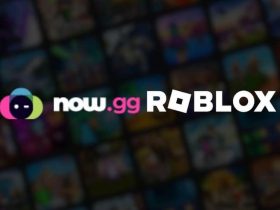With 2020 having turned our life upside down, no one can be quite certain what 2021 has in store for us. As no part of our life remains unchanged, so is education, that is for sure. Below there are five education trends we will possibly face in the upcoming academic year. Some of them are not new, but owing to the pandemic, they will gain momentum.
Virtual Conferencing
Lectures and seminars can be held online once an educator and the students connect via Zoom, Skype, or a similar tool. They can share their findings or discuss a project regardless of their physical location. Aside from the lectures, students can now participate in interactive video-based peer learning or take an online video course. Studying with the help of videos helps to speed up the learning process and retain information better, as the human brain often gives preference to visual information instead of auditory. Besides, modern technology allows students to join live streaming and ask questions, participate in discussions, take quizzes, etc.
Experiential Learning
Today we can also witness the rise of experiential learning, which is about leaving the classroom and gaining direct experience through exposing yourself to your future work life. Not only does it help students to discover their strengths and weaknesses but also accumulate a portfolio of relevant experience and increase their chances of successful employment in the future. Although experiential learning is highly beneficial, and more and more higher education institutions add it to their curriculum, it can affect grades. Many find it hard to cope with a load of academic assignments without failing additional responsibilities. That’s why students should study smarter and not harder. And thanks to technology and the Internet, they have tons of platforms and tools to do so. Whether it is a citing tool, grammar checker, or topic generator, it saves time and makes studying more efficient, allowing students to dedicate more of their energy to gaining practical experience.
Microlearning and Gamification
Microlearning and gamification of learning are growing in popularity as well and will continue to do so in 2021. Both aim to deliver the information in small, easily digestible chunks to allow students to study whenever it is most convenient for them. It is often done in an exciting, eye-catching manner. Microlearning content examples include images, short videos, quizzes, and short texts. Instead of slogging through mind-numbingly long course paragraphs, students can stay on their phones and learn with the help of an app. Of course, explaining complex concepts in this way can be tricky and even impossible. In such cases, microlearning can be used as a testing supplement. Thanks to visual aids and deep involvement, teachers can be sure of better knowledge retention among students. Examples of such apps include Duolingo (for studying languages), Primer (for teaching digital marketing and business skills), TedEd, etc.
Immersive Learning
Previously, studying human body anatomy involved sweating over a thick 2D atlas in a library. Today, if you search for an anatomy atlas on Google, you will find all kinds of 3D models online. Digitalization has pushed the boundaries of our world and created extended reality, an umbrella term referring to virtual, augmented, and mixed realities, and 3D audio and human-machine interface technologies. Students can now walk around a seabed, visit distant countries and epochs, explore a digital version of a human body, look around an aircraft cabin, and all of that without stepping out of the classroom. Extended reality adds a hands-on feel to the studies, allows students to make mistakes without any risks, and ensures better memory retention while learning at one’s own pace.
Automation
An accelerating trend is to make learning more student-centered and personalized. It can be achieved through the wide use of machine learning and artificial intelligence, which can test, assess, and analyze students’ performance and understanding more effectively than teachers can. Hence, teachers have more time to tailor their methods to the students’ learning styles and personalities. They can better address students’ needs, keep a tab on their progress, and build strong student-teacher relationships. It is also worth mentioning that today’s education facilities are more safe thanks to automated security systems with embedded face recognition functionality and are cost-efficient with the Internet of things technology controlling light, heat, and water.
Final Thought
In the times of the 4th Industrial Revolution, technology has made modern learning more engaging and enjoyable. Rote memorization is no longer in fashion. Students take learning into their own hands, empowered by the latest technology hacks, their gadgets’ extended functionality, and a whole array of useful applications. They learn to challenge and innovate rather than copy and reproduce.


















Leave a Reply